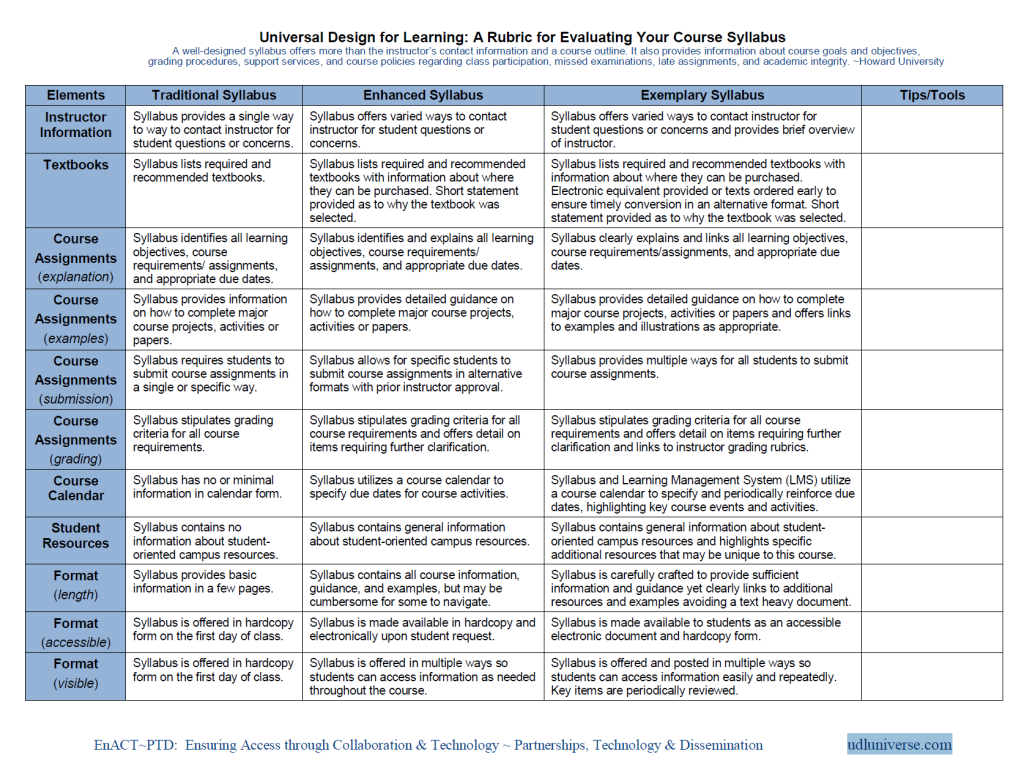Week One
Universal Design for Learning
I have been a fan of UDL in my professional life for a few years now. But I find it difficult for people to grasp the concept without showing them what is “Universal” about Universal Design. Images help a lot. I share examples like this image of a ramp below to demonstrate the affordances of all ramps.

A ramp instead of stairs
The first and obvious answer is for wheelchair users. However, like many designs primarily intended for one reason it is later revealed to have multiple universal applications.
As soon as ramps became ubiquitous, people with other mobility issues and delivery persons using a hand-trucks used them, and so did parents pushing strollers, and travelers with wheeled suitcases or bicycles.
The ramp analogy is useful because building a course is like being an architect and you want to design it to reduce barriers, not create them.
Most students don’t know or report their disability
According to the National Center for Education Statistics (a division of the US Department of Education), students do not report their disability to the appropriate college office.*
In my experience as an instructional designer, I have witnessed students discover a disability in real time, and directed them to the help and support they’re entitled to.
There are so many reasons to incorporate UD into your class design, not only is each learner unique but all learners can and do benefit.

What is the title of the course?
- Provide a brief description of the course.
- What are the Learning Outcomes (LOs) for your course?
- What are the summative assessments used to measure student success for each LO?
- What formative assessments (if any) are used to provide feedback to students / gauge student progress? How do they relate to the summative assessment measures used?
- What is the mode of delivery for this course (face-to-face, online, hybrid)?
Gather information about the students you teach and form a picture of their needs as related to Universal Design for Learning.
- What are the characteristics of your students? Are they a generally homogenous group or are they a diverse group of learners?
- What disabilities should you consider when designing instruction for your students?
- What are your students’ preferences for instruction? What teaching strategies are they accustomed to? Have you received any feedback from them regarding teaching strategies in your course or in others they have taken?
- What do you perceive to be students’ general attitude toward this course or this unit of instruction? Is this course required or is it an elective?
- What other characteristics of your students have you found to have an impact on the design of your course?
- What changes do you wish you see in your classroom after incorporating UDL guidelines? Describe how you will measure success. List at least three changes.
Brainstorm Solutions
Use this worksheet to brainstorm ways to employ the UDL guidelines in your teaching. Write down any and all ideas that come to mind and do not limit yourself at this stage of the process.
Provide Multiple Means of Representation
| Means of Assessment | Instructional Methods | Instructional Materials | |
| Provide options for perception | |||
| Provide options for language, mathematical expressions and symbols | |||
| Provide options for comprehension |
Provide Multiple Means of Action and Expression
| Means of Assessment | Instructional Methods | Instructional Materials | |
| Provide options for physical action | |||
| Provide options for expression and communication | |||
| Provide options for executive functions |
Provide Multiple Means of Engagement
| Means of Assessment | Instructional Methods | Instructional Materials | |
| Provide options for recruiting interest | |||
| Provide options for sustaining effort and persistence | |||
| Provide options for self-regulation |
Select and/or Design Materials for Development
Use this worksheet to create a design plan for your modified course/unit of instruction. Keep in mind the needs of your students, the restrictions of your learning environment, and the amount of time you have to make these changes. Your design plan should be feasible and it should be something you are excited to implement in the fall semester!
- Learning goal(s):
- Means of Assessment:
- Formative Assessment Measures
- Summative Assessment Measures
- Instructional Strategies and Methods
- Instructional Materials
- What materials/resources will you create? How much time do you estimate it will take to create these materials? Can any of these resources be created for you by someone on campus (e.g., work-study students)?
- Use this space to create a timeline of development tasks. Who will complete each task? How long will it take to complete each task? When must each task be completed?
WORKS CITED
Spassov, S. (2015) Photo by Stefan Spassov on Unsplash, Interior view of white building photo – Free Architecture Image on Unsplash. Available at: https://unsplash.com/photos/interior-view-of-white-building-k87dHceae1w (Accessed: 9 November 2023). Photo by Stefan Spassov on Unsplash. This work is licensed under a Creative Commons Attribution-NonCommercial 4.0 International License.
*2022. Press Release – A Majority of College Students with Disabilities Do Not Inform School, New NCES Data Show – April 26, 2022. Accessed November 9. https://nces.ed.gov/whatsnew/press_releases/4_26_2022.asp.
Hromalik, C. D., Myhill, W. N., & Carr, N. R. (2020). “ALL faculty should take this”: A Universal Design for Learning training for community college faculty. TechTrends, 64(1), 91-104. https://doi.org/10.1007/s11528-019-00439-6

